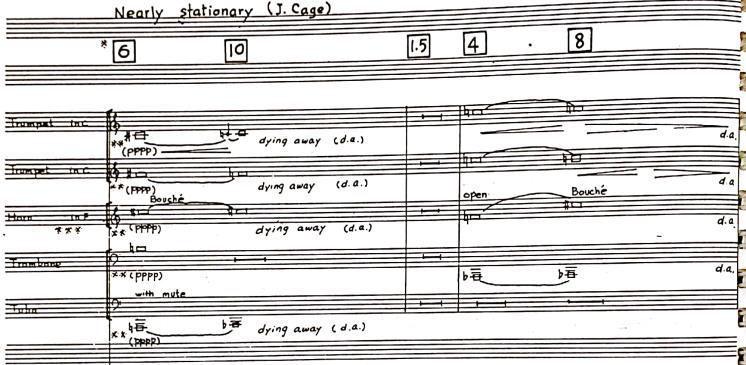GEORGE ENESCU'S WORK IN THE YEARS OF THE FIRST WORLD WAR PROF.DR. VASILE VASILE, PH.D. ROMANIAN COMPOSERS AND MUSICOLOGISTS’ SOCIETY ABSTRACT: It is known that one of the most eloquent evidences of patriotism of the most honest essence, proven by Enescu throughout his life, is the fact that in times of restraint for our people he chose to stay in his country with his own people, despite the fact that he could and were offered places protected by the ordeal of the two world conflagrations. One could speak of an excess of the repetation of this truth, without investigating its concrete data, which not only support the statement but complement the human personality of the great artist of the 20th century – the century, who has repeatedly stated that artists are apostles of peace.
KEYWORDS: FIRST WORLD WAR, YASSY, ACADEMY OF MUSIC THE MOST eloquent confirmation of these assertions is given to us by Enescu's work in Yassy in the
years of the First World War. I was drawn to the subject from both directions. First of all, the desire to investigate the human amplitude of the genius artist, reconfirmed by the complex activity carried out in the First World War, when the city temporarily resumes its status as the capital of not only Moldova, but Romania, occupied mostly by German troops who could not defeat the sacrifices of Mărăști, Mărășeşti and Oituz and over which the revenge invaders could not cross, establishing here the temporal border of Romania, which will become, at the end of the terrible slaughter, Greater Romania. On the other hand – the attachment of the fighters, simple people who gave their chests to the bullets and shells of General Makensen – who stated that „the army Romanian had risen from its ashes like the Phoenix bird” – was matched by sui generis cultural acts hosted by the former Moldovan capital and led by George Enescu. This broad cultural life contradicted the old saying: Inter arma silent musae (Cicero: Pro Milone IV-10: „Between arms the muses are silent”). The painstaking and responsible investigation of archival funds provided me with the material necessary for the study published in 1979, in the musicological volume devoted to the great events of 1948 and 1918 and then of an extensive work on Enescu's footsteps in Yassy and Tescani, in the process of being finalized (Vasile, 1979, pg. 149-199). As I will highlight below, George Enescu's work is an illustration of his own statement regarding the five hypostases under which he presents himself: violinist, conductor, pianist, composer and pedagogue, all these hypostases being evident in the complex work carried out in Yassy, during the years of the terrible world. That last quality must be understood in terms of intensive work to improve the violinists of the era, what might be called „master of masters”, in Yassy being granted the title of honorary teacher, carrying out an intense activity of perfecting many Romanian violinists. But in Yassy one can talk about a 6th position: organizer and animator (manager) of musical life, activity concreted in the organization of the symphony orchestra that will bear his name and memorable symphonic stages, here also the recognition of the status of honorary rector of the Conservatory that will bear his name as early as 1931. The data of this enescologic approach strive to attract attention over important moments in the life and activity of the genius of Romanian music and to complement and deepen them. In order to understand correctly this complex, cultural, artistic, but above all humanistic and patriotic activity, it is necessary to present the general historical framework in which it is part. Romania goes to war against Austria-Hungary after two years of neutrality. In a first campaign, Romanian soldiers liberated one third of the Transylvanian territory under Austro-Hungarian occupation. Unfortunately, this victory is followed by the occupation of Transylvania and then Muntenia by the invading armies, causing the exodus of the population and central authorities to Moldova, the old Moldovan capital becoming for a period the capital of the whole country. Among the personalities who settle in Yassy to include George Enescu. This takes place after a sanitary internship at a military hospital in Bucharest. A chronicle signed only „A teacher”, published in the Neamul Românesc on May 14th, 1919, retains the moment after the failure of Turtucaia, when the Central School of Bucharest was transformed into a hospital of the Red Cross. The Chronicle notes that 137








